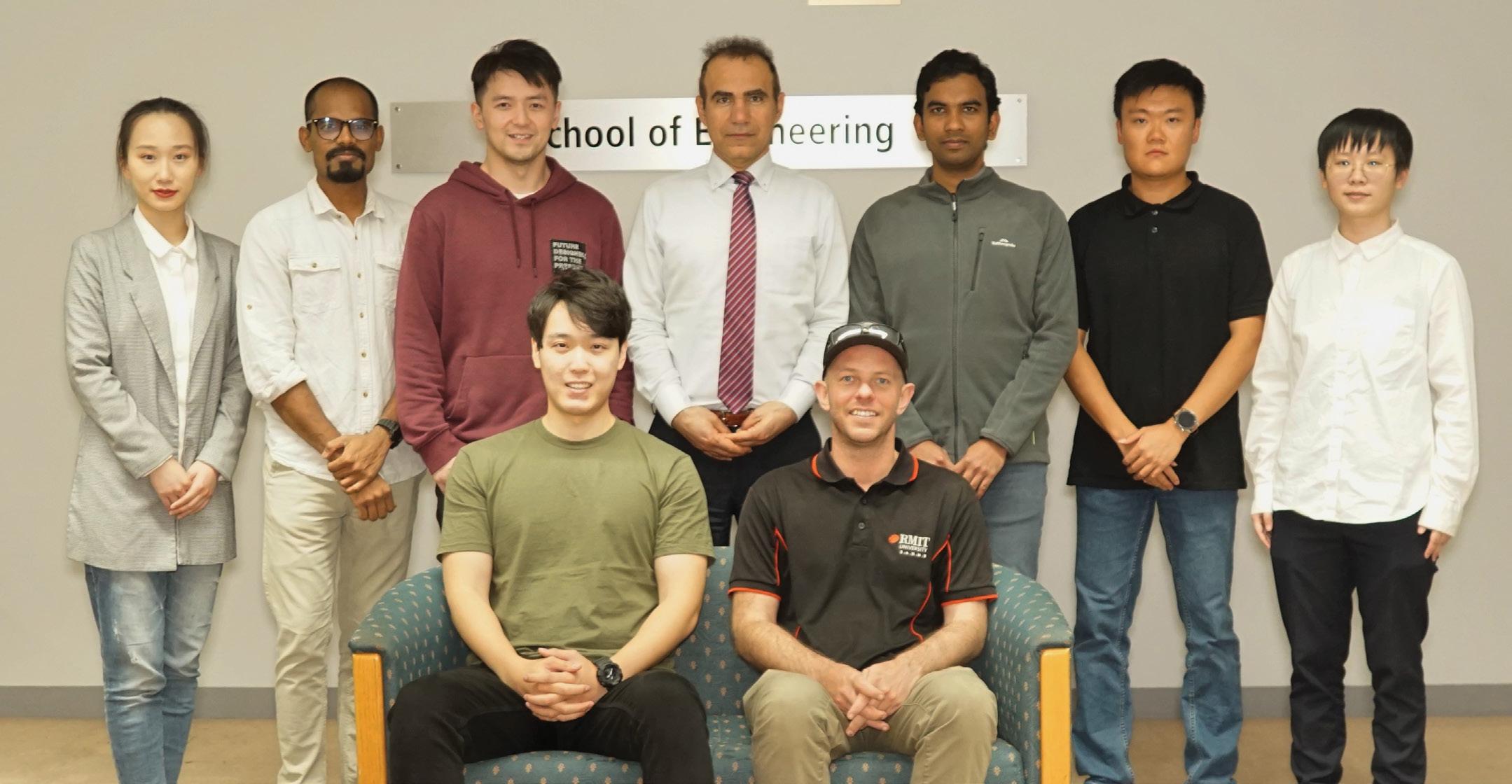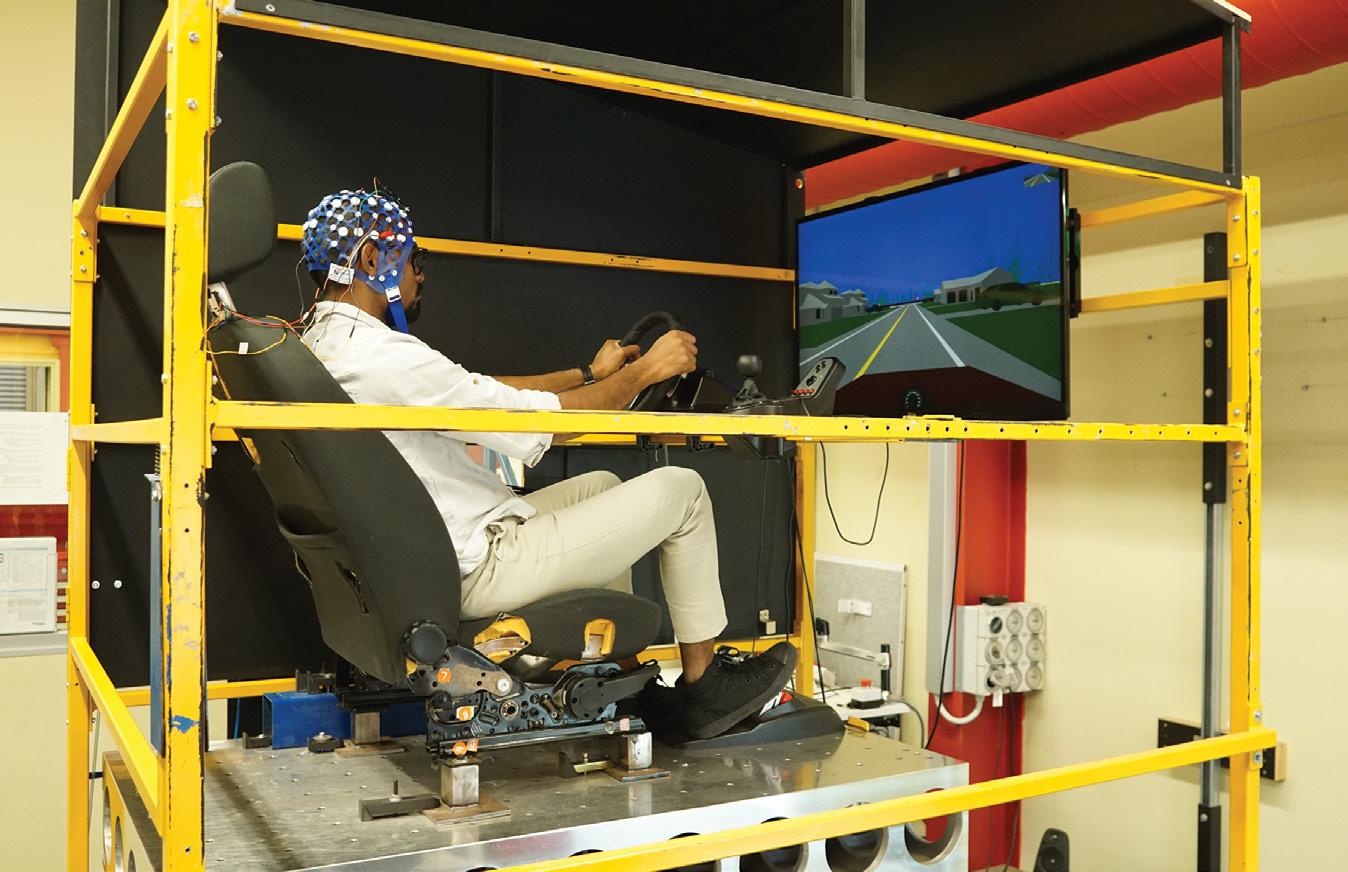
8 minute read
Mohammad Fard: Passing on the Passion
from VTE March 2021
by Possprint
Mohammad Fard: Passing on the passion to young engineers
Steve Jobs once said: “Your work is going to fill a large part of your life, and the only way to be truly satisfied is to do what you believe is great work. And the only way to do great work is to love what you do.”
Without any doubt it was love that drew the SAE-A’s most recent chair Dr Mohammad Fard to mechanical engineering, and in his case, it was an enigmatic love for Nissan cars. As Mohammad explains, it wasn’t that he didn’t like other car company’s products, but he was attracted from a young age to Nissan powertrains. His heart led him down the path that has grown into an amazing career that has and will continue to change how we work and design motor cars, and the passion he instils into his engineering students. Initially Mohammad studied in his native Iran obtaining his undergraduate mechanical engineering degree and then his master’s in mechanical engineering from the University of Tehran. But then his love of Nissan cars drew him to Japan and specifically to the University of Tohoku in Tokyo. “The reason I went there; I wanted to work in the automotive industry particularly in Nissan because I had an interest in Nissan cars,” he said. “That was one reason I decided to go to Japan to do my PhD and I was searching for a good university. And the research topic was one I liked so that’s why I went there.” Mohammad obtained a Japanese government scholarship to attend the university and they arranged a few months of intensive Japanese language instruction that included learning about Japanese characters to understand the concept. Before arriving in Japan, he had taught himself some basic Japanese and then as he said, from the first day in Japan he pushed himself to express himself in Japanese. After obtaining his PhD he did find his way into work at Nissan which no doubt made his heart sing as finally he was where he dreamt of working, which he did as a CAE design engineer at the Nissan Technical Centre for five years. “When I decided to leave Nissan, I had a good job, it was a very difficult decision for me to leave,” Mohammad explained.

“The reason I did was to work at university with younger people to develop my own research topics to have some freedom with the direction of the research which in a company is not possible. It’s not possible for any company to have that much freedom but in a university you have more. “I came to Australia and it took time to develop my team and now I am very happy and lucky.” Inspiration now not only comes from inside Mohammad, but he says also from the talented students he works with at RMIT University who come from a variety of different backgrounds all with one aim in mind, the same aim as he – to work and develop the field of mechanical engineering into the new form into which it is transforming. He says that two or three years ago the writing was on the whiteboard, he and his research team quite clearly saw the transition that was happening in the automotive sphere with autonomous vehicles. And while the ravages of COVID-19 in 2020 were not welcomed Mohammad and his team were able to find more time during that year to revisit research activities and plan for work in the area of autonomous vehicles. “Everyone in my research team, my PhD students, we had to bring autonomous components into our research,” he said. “For instance, I had a research team where we had collaboration with a Japanese company – a seat development company. I asked my PhD students to develop a seat for an autonomous car. “I have another PhD student working on sound pattern recognition using machine learning or artificial intelligence to find the problems of the sound signature. So, I said we had to see whether we can use sound to make an autonomous car audible.” He said this type of research and work ignites passion in his team and makes them proud. And the skills they learn are not just classical mechanical engineering, it goes well beyond that and it gives them strong skills to work in different sectors in the future professionally. Mohammad says that the short answer to inspiring new engineers is that we have to offer new things for them in automotive – things that are coming. This will attract a lot of attention from students and attract young engineers to the sector. “I think the digital components are coming more into classical mechanical engineering, but smart digital components,” Mohammad said. “Because this something that is needed in autonomous cars. Mechanical engineering has already started in this direction. Digitisation of the industry, adding digital components into mechanical engineering is something we can expect.” Secondly, artificial intelligence is helping to solve some of the classical mechanical engineering problems that in a way that is more cost effective and easier. One research topic done at RMIT University is sound pattern recognition, which in the past it took a lot of labour and costs to identify issues. But that has all changed now with new apps and other AI. Mohammad said that this means classical mechanical engineers must become familiar with AI tools and digital tools for this transition. “We need our students and young engineers to be ready for this digital mech engineering or smart mechanical engineering in the future,” he said. Because Mohammad’s research team, and his research is related to the automotive industry, the SAE-A was a natural fit. He said it was the key source for the automotive industry in Australia so when it was suggested that he join he happily accepted. Another reason he accepted was the realisation that he could bring industry knowledge and international contacts to APAC21 and contribute to running the conference by accessing and bringing more key leading industry experts into the event, particularly those from Asia. Finally, it was Mohammad’s interaction with FSAE that clinched the deal. “I was leading the RMIT FSAE team for two years so during that time I was amazed with the organisation and the programs SAE-A have for different levels particularly for the students. I was proud to join,” he said.
MOHAMMAD FARD - BACKGROUND
Research areas
• Human Body Vibration and Driver Drowsiness • Structural Dynamics • Noise, Vibration and Harshness • Application of AI Technology in Noise and Vibration
Funded projects
• 2013 to 2017: NHK Spring and Nissan (Japan) and CRC (Australian
National Organization). Title: Development of New Method to Predict
Occupied Seat Vibration and Comfort. • 2013 to 2016: General Motors (Australia): Title: Development of a
Smartphone Application for Diagnosing Vehicle Interior Noise. • 2014 to 2016: Futuris Automotive Interiors (Australia): Title:
Development of a Method to Predict Acoustic Properties of Vehicle
Cabin. • 2015 to 2018: Ford Motor Company (Australia): Title: Development of
CAE Concept Modelling Method for Vehicle Body-In-White. • 2016 to 2019: NHK Spring, Nissan (Japan) and CRC (Australian National
Organization). Title: Development of a Method to Control the High
Frequency Vehicle Seat Structural Vibration Using Piezo-Actuators. • 2018 (six months): AMSI Intern Program Aurecon Group. Data
Analytics and Machine Learning for system diagnostics, condition and assessment and operation modelling. • 2018 to 2019: iMove CRC Research Project Agreement. Title: Algorithm
Development for “Squeaks and Rattles” Identification Using Sound
Pattern Recognition. • 2018 to 2022: USG Boral Company. Title: The Impact Sound Signature of Lightweight Construction. • ARC Discovery Project (DP190100472). Under review. Dr Fard’s cross-disciplinary research team from the schools of Engineering, Health and Biomedical Sciences, Science, and Media and Communication achieved a significant international media (TV, Radio, and Newspapers) coverage in Australia, Europe, Canada, Japan, and USA of their research on the effects of road vibration on driver drowsiness and road safety in July 2018.
Teaching responsibilities
With nearly six years international working experience with Nissan (Japan) and 10 years at RMIT University, Dr. Fard has the experience and confidence to design and deliver lectures with direct connection to industry and realworld applications. He has developed an innovative project-based approach for teaching two of the major Mechanical and Automotive engineering subjects –Advanced CAE. This is novel method uses the latest tools in 3D modelling and CAE technology for teaching a subject, which allows the students receiving a hands-on practice in a computer laboratory without any need to attend workshops, which can be impractical for large class sizes. • Automotive Advanced CAE (AUTO1026) • Advanced CAE for Mechanical Engineering (MIET2491) • Vehicle Noise, Vibration, and Harshness (MIET1192) • Automotive Research Project (AUTO1035, AUTO1027) • Motor Vehicles, Society, and Sustainability (AUTO1012) • Postdoctoral Fellow, Tohoku University, Japan, September 2003. • PhD, Mechanical Eng., Tohoku University, Japan, March 2003. • Research Student, Tohoku University, Japan, 2000. • BSc and MSc, Mechanical Eng., Mechanical Eng., University of Tehran,
Iran, 1998. Dr Fard worked at Nissan Motor Company (JAPAN) on Vehicle Body Design [CAE and NVH] as a lead engineer between prior to joining RMIT University. His experience at Nissan, as a member of a highly competitive and constantly innovative team of engineers that focused on real-world applications of research was invaluable. His significant achievements at Nissan focused mostly on reducing the vehicle body structural noise and vibration a using CAE (FEM) and NVH techniques. His contributions resulted in multiple discoveries for the company and translated into innovations in vehicle body design.


